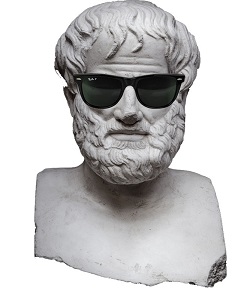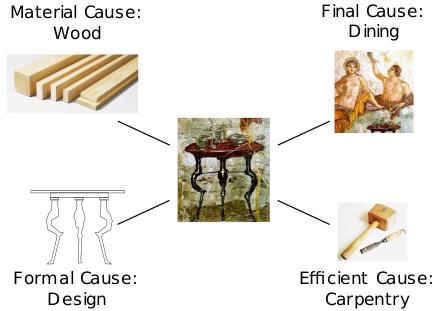|
TRANSLATE THIS ARTICLE
Integral World: Exploring Theories of Everything
An independent forum for a critical discussion of the integral philosophy of Ken Wilber
 Joe Corbett has been living in Shanghai and Beijing since 2001. He has taught at American and Chinese universities using the AQAL model as an analytical tool in Western Literature, Sociology and Anthropology, Environmental Science, and Communications. He has a BA in Philosophy and Religion as well as an MA in Interdisciplinary Social Science, and did his PhD work on modern and postmodern discourses of self-development, all at public universities in San Francisco and Los Angeles, California. He can be reached at [email protected]. Joe Corbett has been living in Shanghai and Beijing since 2001. He has taught at American and Chinese universities using the AQAL model as an analytical tool in Western Literature, Sociology and Anthropology, Environmental Science, and Communications. He has a BA in Philosophy and Religion as well as an MA in Interdisciplinary Social Science, and did his PhD work on modern and postmodern discourses of self-development, all at public universities in San Francisco and Los Angeles, California. He can be reached at [email protected].
SEE MORE ESSAYS WRITTEN BY JOE CORBETT Toward an Integral Science with an Integral AristotleJoe Corbett
In the case of a human it would be a bit more difficult to decide what their purpose is, since it could be many and it's much more complicated.
Aristotle famously wrote about four causes that explain why things happen and come to be as they are. It is important in the history of philosophy and science because it served as the foundation for understanding and explaining nature itself for nearly two-thousand years, discounting the dark ages when the Greeks were largely lost to the west. After the scientific revolution of the 16th and 17th centuries it was eventually dropped like a hot potato by the 19th and 20th centuries. But now it may be necessary to return to Aristotle's notion of scientific inquiry into the nature of things through four causes for a more complete understanding of nature. 
According to Aristotle, the most basic cause of things is their material cause, or the physical matter that constitutes their material being, which in the AQAL corresponds to the UR quadrant. To have a house there must be the materials of which it is made, and the same goes for any other thing. But material must have a form, or a formal cause, which is the form the house will take as an image in the mind of the builder, or as a blueprint of the house design. Likewise, a human being will normally walk upright and have four limbs, as well as a head and an ass for spewing shitloads of sometimes indistinguishable ideas and waste. Joking aside, the formal cause is what defines a thing for what it is. It is the shape and/or pattern of activity of the matter that makes a thing. A house has a blueprint, and a human has a genetic code. Each serves as a kind of memory for the routine ritual enactment of coming into being for the house and the human. If a mistake is made in carrying out the formal cause it may be catastrophic for the house or the human. If a mistake is made in a ritual it could spell doom for the community. And if a cultural value is violated it could provoke outrage, disorder (literally, a breakdown of the collective form), or exile for those who violated the sacred code. This makes the formal cause correspond to the LL quadrant of the AQAL, where the memories, rituals, and value-orientations of our collective life (and our biology) give form and meaning to who we are. The third cause for Aristotle was the efficient or agentic cause. This is the cause that creates an effect, as in the carpenter who builds the house from a blueprint, or the many biomolecular interactions that carry-out the instructions of the genetic code to build a human. An efficient cause is the inter-objective relation of one thing on another, or the LR quadrant of the AQAL. The material cause and the efficient cause, both exterior quadrant phenomena, are the explanations that scientific materialism has used to explain things.
The fourth and final cause of Aristotle's four causes is, you guessed it, the final cause, or the end purpose for which a thing exists. In the case of a house that purpose would be to provide shelter, which is the reason why we build houses. In the case of a human it would be a bit more difficult to decide what their purpose is, since it could be many and it's much more complicated. But the essential point is that the final cause exists in the future, as a future possible form of a thing, whatever that form may be and by whatever cause-effect mechanism and matter it comes to be. And for most things the final cause is indeed multiple, even as a house may be built for other reasons than for shelter alone. The final cause therefore exists as a possibility that guides rather than determines a thing. It acts as an attractor of potentiality and uncertainty that initiates the actuality of new forms and their material-causal relations. It corresponds to the UL quadrant of the AQAL, where the form of things take their initial shape but never settle into their fixed form until memory and ritual enactment have etched a final causal purpose into the formal cause of things. We will never know, afterall, what the purpose of our house is (to provide shelter, or to create a facade on a movie set?) until it has actually been built (and by whom, a professional or an amateur?) out of materials (cheap, or sturdy?) according to whatever blueprint the house had (an architectural design, or a picture the builder once saw in a magazine?). Aristotle's four causes can thus be mapped to the AQAL as Material Cause (UR), Efficient Cause (LR), Formal Cause (LL), and Final Cause (UL). Material and Efficient causes in the exterior quadrants correspond to the material-causation paradigm of explanation in the scientific method. The Formal Cause (LL) and the Final Cause (UL) on the other hand correspond to the interior quadrants, and are usually left out of the scientific explanation for how the world works. My theory of Integral Evolution, or Transdarwinism, on the other hand makes use of the interior quadrants in the explanation for how species come to be in the world. In that explanation, traits in the UR are selected for by the environment in the LR, which is part of standard neo-darwinian explanation. But in addition, I hypothesize, there must be interior quadrant causal explanations that include the adjacent possible forms of traits in the UL that do not determine but do guide the future possible forms of traits to be selected in the environment. These future possible forms of traits act as attractors that become more etched into the actual forms of species in the LL through ritual-habitual resonance between their future possible forms and the environment they interact with. In other words, not just traits in the UR but their future possible forms in the UL must be accounted for in how species evolve through natural selection. Moreover, not just selection of traits in the LR but ritual-habitual resonance of future possible forms in the LL must be accounted for to explain how new species emerge and take hold in their environment. Likewise, in my theory of the cosmos as the creative-adaptive learning process of a Kosmic Mind, I make use of all four quadrants as a causal explanation. All gross material interactions in the UR are mediated by virtual particle-antiparticle pairs in the LR (yin-yang condensates, or the eyes of spirit) that emerge from the quantum void according to the uncertainty principle, and which some physicists claim is the source of dark energy. The traces of the interactions between regular matter and the virtual particles are then recorded (holographically) as a memory trace at the subquantum level into the fabric of space-time at the planck scale as the informational storehouse or Akashic field in the LL, which I hypothesize is also the dark matter, and which serves as the source of morphic and archetypal fields that give shape to the forms of the universe from moment to moment. Lastly, the quantum potentials of matter in the UL, the intangible but nevertheless real actualities of future possible forms (since the wave-function never actually disappears when it “collapses”), serve as indeterminate or probabilistic guides to new forms in an open-ended and uncertain universe that ultimately needs anchoring in a formal memory field through resonant habitual-ritual or repetitive-cyclical interactions in the LL. Also, in my theory of the evolution of space-time and cosmosemiotics, again I make use of a four-fold causal explanatory model roughly corresponding to Aristotle's four causes as mapped to the four quadrants of the AQAL. In that theory, the tetrahedral qubit (signifier) and the principle of Manifestation-Extension of space-time correspond to Material Causation in the UR. The principle of Conventional Constraint and Commitment (semantic meaning) corresponds to Formal Causation in the LL. The principle of Rules for Generation and Coordination (grammatical syntax) corresponds to Efficient Causation in the LR. And the principle of Variation-Possibility corresponds to Final Causation in the UL. These are just three broad and bare-bone theories I have used as an explanatory model of the universe that goes beyond the two-dimensional explanatory framework of modern materialist science. There are many other theoretical models that could be created by using a four-dimensional causal model of an integral science using an integral Aristotle, both as a map and as a tool for more complete explanations of the universe in which we live and, more importantly, a universe out of which we come. 
Aristotle's Four Causes illustrated for a table: material (wood), formal (design), efficient (carpentry), final (dining). (Wikipedia)
|